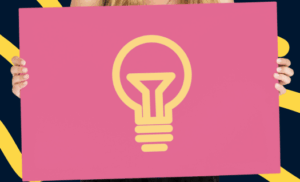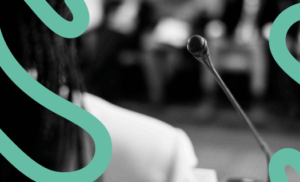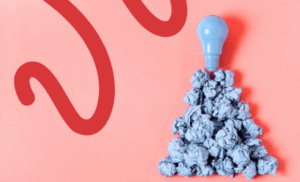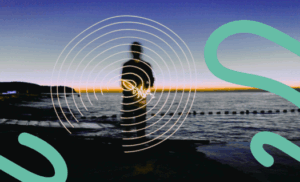Creativity can have different forms of expression. There is not just one way to ‘be creative’, nor is there a definitive manual on how to be creative (sorry). Nor is it exclusive to artists. We have to think that every one of us can become one, whether at work or as part of a personal hobby or pastime.
It is true that, when creativity is part of our professional role, it often tends to be a bit stressful, because we have to be original under deadline, under pressure and sometimes with lower budgets than it is possible to develop ideas.
When imagination becomes creativity
Some people are better at creativity than others. Perhaps because they give free rein to their imagination and their brains are more accustomed to it. While some work every day to achieve it, for others, creativity simply comes to them at the least expected moment… Just like that, fleeting.
Think about how many times, on a weekend, an idea has popped into your head about a project you’ve been working on during the week. You’re there, at a barbecue with friends or at a family meal. Can you visualise it? As Steve Jobs once said, “Creativity is just connecting things. When you ask creative people how they did something, they feel a bit guilty because they didn’t really do it, they just saw something .”
Creativity often appears without warning and, if we don’t capture it instantly, it often vanishes without a trace. Is there anything more frustrating? That’s what we want to avoid. But how do we do that? It is essential to write down everything that comes up, without judgement or filtering. It can be in a notebook, a note-taking application or even a voice recorder. The important thing is not the tool, but the intention to catch that spark before it evaporates. Criticism can wait; in the beginning, what matters is to preserve the raw idea.
Creative ritual to keep the creative spark alive
Establishing a creative ritual also helps to sustain the constant flow of ideas. By getting our mind used to being in constant action, we exercise it to be able to create. Our brain responds to signals and routines, so having a space, a schedule or a dynamic that marks the beginning of the creative moment can be a great advantage. It’s not about being rigid, but about creating a recognisable environment that channels creative energy. Just as you may be able to develop the habit of exercising your body on a daily basis, you can exercise your brain. Even a flexible schedule can function as a container that gives form to the intangible.
‘Our brain responds to routines, so having a space, a schedule or a dynamic that marks the beginning of the creative moment can be an advantage’.
An idea, however brilliant it may be, is not worth much if it is not put into action. Don’t wait until everything is clear to start: clarity comes by doing. Starting with a small version, a draft or a prototype is often the best step. The important thing is to get out of the mental plane and into practice, even if you don’t have a perfect plan.
Needless to say, creativity does not stop at the first version. It is only the beginning of the creative process. The raw material needs to be revised, edited and improved. Writing, rewriting, cutting, adjusting: it’s all part of the process. The idea may even differ a lot from the first thing we worked on as we go through the whole process.
Don’t let creativity die!
It is also important that you don’t kill an idea just because it wasn’t perfect from the start. Give it time and attention to find its best form, nurture it, refocus it, look for references.
Many initiatives die for lack of follow-up or motivation because the first idea did not work. Define a goal, even if it may change along the way. Defining dates, even if they are flexible, can change the course and become a success. Sharing the project with someone else can help to maintain responsibility and not give up halfway.
Finally, accept that not all ideas will come to fruition. It can often happen that some of them arise only to train the mind, to keep the capacity to imagine and create awake. Not everything has to materialise, but this does not mean that we will become demotivated and abandon all ideas for fear that they will not materialise into anything. Remember: capture and develop at least one of your ideas so that creativity does not go up in smoke.










